By Cody Hooper, Photos by Casey Cordiero and Cody Hooper
The low down on the industry’s biggest new UTV
Unless you’ve been living under a rock (or similar shelter) for the past month, you’ve no doubt come across pictures, video, commentary, and speculation regarding the Maverick X3 Max. While initial opinions from the internet crowd seemed to be mixed, we have the full scoop, as we spent this past weekend with the Max in Glamis for a bit of hard testing.
For our test outing, we brought along multiple units, including 2 and 4 seat variants of the 2017 Can-Am Maverick X3 and the 2017 Polaris RZR XP Turbo. We drove them all back to back to gather our initial impressions, and filled each car with passengers to get feedback from the seats that don’t come with a wheel and pedals. What we discovered will undoubtedly shock a lot of naysayers- the Maverick X3 Max is a championship contender.
Starting with a good platform is the key to any successful vehicle. Based on the brand-new Maverick X3, the Max sees an absolutely massive 33 inch wheelbase stretch, lengthening the vehicle overall by that same margin. For comparison, the XP4 Turbo is stretched 27 inches.
Here’s how they all shake out:
XP TURBO (2 seat)
Length: 119 inches
Wheelbase: 90 inches
MAVERICK X3 X DS (2 seat)
Length: 131 inches
Wheelbase: 102 inches
XP4 TURBO (4 seat)
Length: 146 inches
Wheelbase: 117 inches
MAVERICK X3 X DS MAX (4 seat)
Length: 164.4 inches
Wheelbase: 135 inches
As you can see, the Maverick X3 Max is a full foot and a half longer than an XP4 Turbo in both wheelbase and overall length. This may pose a problem for those with toy haulers that don’t have 14 feet of cargo space. The extra length is immediately identifiable as passenger compartment space- the X3 Max has far more interior room than any multi-passenger UTV on the market today. All four seats are adjustable, with more legroom in the rear passenger compartment than most mid-sized sedans. The good? Even tall or bulky passengers will fit in the back seat of the X3 with incredible levels of comfort. Your knees won’t be knocking against the backside of the front seat, and there are even angled foot holds in the rear compartment to help passengers brace themselves. Can-Am went above and beyond with the area allocated for passengers, so if you are looking to haul adults in the back seat, take notice.
The bad? There is over 100 inches of chassis hanging between the tires, leaving the belly of the car free to hang up on steep hill transitions and while cresting dunes. Did it slow us down in Glamis? Not a single time. With the X3 Max’s ample power and suspension prowess, tearing through even the tightest of dunes doesn’t feel like a chore. Cresting hills head-on will require more careful planning than in a shorter car, but everywhere else, the X3 Max handles its length with poise. The car didn’t get high-centered once by any of the drivers who spent time in the car.
Our demo unit showed up to Glamis dressed with several PAC accessories from Can-Am. Between the front and rear dune bumpers, adventure roof rack with spare tire and lights, full length rock sliders, LinQ 8-gallon cooler box and LinQ Pivoting Rack we are sure that another 300lbs. was added to the weight of our Max. That affects ride height and performance right out of the box.
The Maverick Max is within spitting distance of the RZR XP4 Turbo’s weight as well. Both companies list dry weight as their preferred unit of measurement, with only 44 pounds of weight as the differential, favoring the Polaris. Visually, the Can-Am looks much heavier; in reality, it isn’t. Seeing as how the X3 2 seat model is listed as being 5 pounds lighter than the XP Turbo 2 seater, it’s not hard to see why. The X3 Max’s Rotax ACE turbocharged 3 cylinder engine is certainly up to the task of moving the big Canadian around, as even with a full load of people, the Max is downright fast. Our testing duty was all done on stock Maxxis Bighorn (or Bighron to some) tires. We set our pressures at 10 psi front, 12 psi rear on the stock X DS model’s beadlock wheels and had no issue railing the biggest bowls in the sand pit.
The X3’s 154 horsepower mill is sharing the stage with the Maverick’s wonderful chassis tuning in both the 2 and 4 seat variants of this car, giving a real standout performance once the X3 reaches speeds above 45 mph. Bottom-end grunt is plentiful, turbo and clutch lag are near zero, and the top-end performance is breathtaking. The engine makes fantastic noises, too, and it doesn’t share an engine note with any other UTV on the market. The engine sounds like a turbo snowmobile at full tilt, but also makes great growls, pops, and burbles at lower throttle openings and when dipping back into the throttle after braking for a corner. Don’t let the claimed 14 horsepower deficit over the 2017 RZR XP Turbo fool you- they are incredibly close in a drag race, and both are quick enough to give you a big adrenaline rush from behind the wheel.
We spent quite a bit of time in the small, choppy dunes near the Glamis flats to get a feel for how the Maverick handles quick direction changes and off-camber transitions. Even with the standard 64 inch wide X DS model, the car remains completely stable and balanced, changing direction easily with a little squeeze of the skinny pedal in 4 wheel drive. The X3 cars like to be driven with the throttle, using the steering as more of a gentle guide than a hard pivot. For those familiar with dirt bikes, these cars steer more like a 2 stroke- flick the wheel, lay on some power, and adjust your trajectory with wheelspin. It’s intuitive, fun, and very predictable. That being said, the long car will never be as nimble as the shorter vehicles in the segment whether they are made to carry 2 or 4 passengers- but for its length, the Can-Am is surprisingly nimble.
We do have a couple of gripes, so we will get them out of the way here. The interior’s center console assembly is flimsy and feels extremely cheap. Just popping the electronic key onto its receptacle on the dash causes the whole center stack to flex quite a bit. The passenger handholds are also a bit awkward- we wish Can-Am would drop the ski poles and install T-bar grab points like Polaris has done for years. Forward visibility when cresting a hill is also fairly poor, as the low seating position and long hood make it hard to spot your front end when you’re pointed up and the ground is sloping away from you. You learn to drive around it, but it can’t match the stellar forward visibility of the RZR and YXZ. Besides those points, the rest of the interior offers segment bests in seat comfort, seating position, leg room, and adjustability. Being able to stretch both legs out in the X3 comfortably lends to a much more confident feel behind the wheel, as well as less bruising on the knee from smacking the door in rough terrain.
We left the shocks untouched for our testing, as we wanted to get a feel for the car as it will be set up for everyone who purchases one. Ride height should be set at 12.75” under the belly, but our test unit with accessories was set about 11″. We didn’t have any issues with the car bottoming out or dragging its belly, even in deep sand whoops. The FOX Podium RC2 shocks that came standard on our X DS test model were valved incredibly well, offering good reduction of chop while still retaining great bottom out control. We set our 2 seater up a little higher (around 14 inches under the frame), and would set the 4 seater up the same way for increased ground clearance at ride height.
This car is an absolute riot in long whoop sections, and it’s definitely the car’s length doing the work here. In most whoop sections, the front and rear wheels will be 3-4 rollers apart, reducing the pitching and bucking motion at speed. Stock for stock, there isn’t another UTV on the planet that will outrun a Maverick X3 Max in the whoops. Even the 2 seat Maverick X3 can’t keep up, as we demonstrated by pulling a huge lead on our test loop through rough sand whoops. While we have yet to drive it, we can only assume that the X3 Max X RS long travel model will be the undisputed king of stability in rough desert sections.
The DPS steering system is one of our favorite parts of the 2 seat X3 cars, allowing you to dial in one of three power levels for the power steering unit. On its maximum setting, the 2 seat X3 is one-hand drivable in rough, rutted dune conditions. The Max has more leverage and weight placed on the same steering system, so its maximum setting feels right in line with the medium setting on the 2 seat model. Little kickback makes it through the wheel when the tire pressures are set properly for the sand. Braking feel is excellent, slowing the big car down in a hurry without any wiggling or squirming.
Can-Am cleverly priced its mid-range X DS Max model $100 below the asking price for a 2017 RZR XP Turbo EPS. You can also get a base model X3 Max for $24,999, but it trades out the stellar FOX RC2 shocks for three-position adjustable FOX QS3 units, and removes the beadlock wheel option. The base model is also fitted with 28 inch tires versus the X DS’ 29 inch meats, and doesn’t get the upgraded color options of the DS model. Top of the line X RS Max cars retail for $29,099, complete with a factory long travel kit pushing the width to 72 inches. The X RS adds two inches of front and rear suspension travel to the X3’s already capable chassis, for a total of 22” of terrain-devouring travel. Those that opt for the RS package also get upgraded paint schemes, 30 inch Maxxis Bighorn tires, FOX 3.0 RC2 shocks, a full roof, full-length HMW skid plates, and color-matched suspension, wheel, and frame pieces. Buying a 2017 RZR XP Turbo and fitting it with a long-travel kit to match the X RS’s performance would push the price to around $35,000.
SUSPENSION
- Front Suspension- Double A-arm with sway bar 20 in. (50.8 cm) travel
- Front Shocks- FOX 2.5 PODIUM RC2 Piggyback with dual speed compression and rebound adjustments
- Rear Suspension- 4-link Torsional Trailing-arm X (TTX) with sway bar 20 in. (50.8 cm) travel
- Rear Shocks- FOX 2.5 PODIUM RC2 Piggyback with dual speed compression, rebound adjustments and bottom-out control
DIMENSIONS
- L x W x H- 164.4 x 64 x 65 in. (417.7 x 162.5 x 165.1 cm)
- Wheelbase- 135 in. (342.9 cm)
- Ground Clearance- 13 in. (33 cm)
- Estimated Dry Weight- 1,735 lb (786.9 kg)
- Fuel Capacity- 10.5 gal (40 L)
BRAKES
- Front- Dual 262 mm ventilated disc brakes with hydraulic twin-piston calipers
- Rear- Dual 248 mm ventilated disc brakes with hydraulic twin-piston calipers
About BRP
BRP (TSX:DOO) is a global leader in the design, development, manufacturing, distribution and marketing of powersports vehicles and propulsion systems. Its portfolio includes Ski-Doo and Lynx snowmobiles, Sea-Doo watercraft, Can-Am all-terrain and side-by-side vehicles, Can-Am Spyder roadsters, Evinrude and Rotax marine propulsion systems as well as Rotax engines for karts, motorcycles and recreational aircraft. BRP supports its line of products with a dedicated parts, accessories and clothing business. With annual sales of over CA$3.8 billion from over 100 countries, the Company employs approximately 7,900 people worldwide.
Ski-Doo, Lynx, Sea-Doo, Evinrude, Rotax, Can-Am, Maverick, Defender, and the BRP logo are trademarks of Bombardier Recreational Products Inc. or its affiliates. All other trademarks are the property of their respective owners.

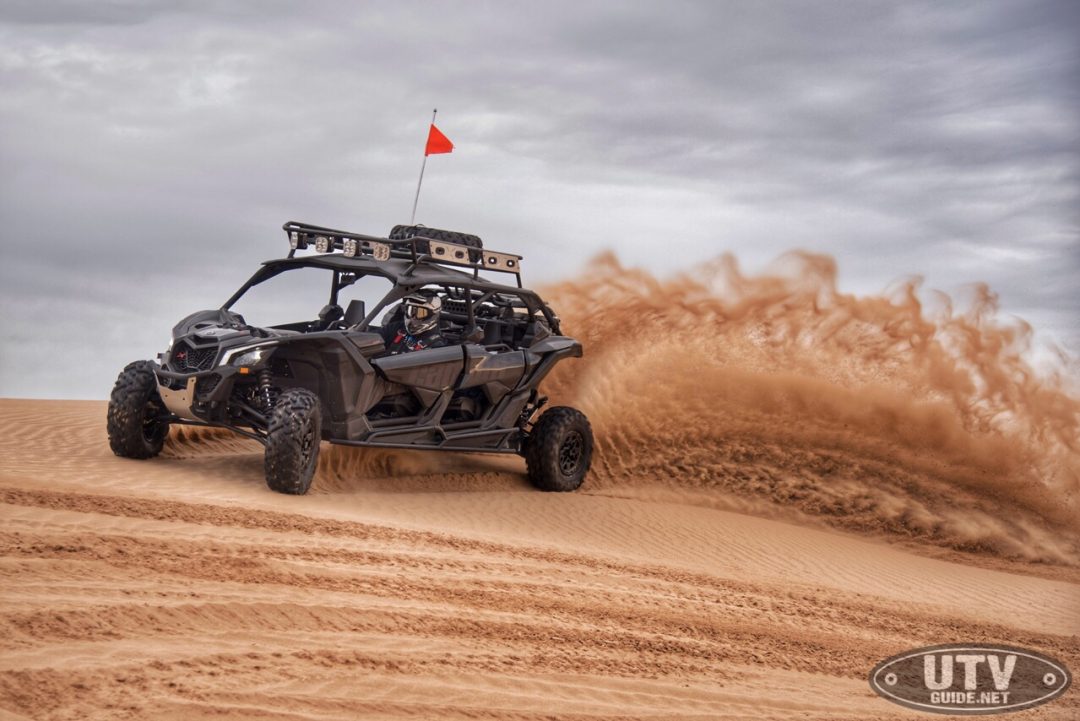
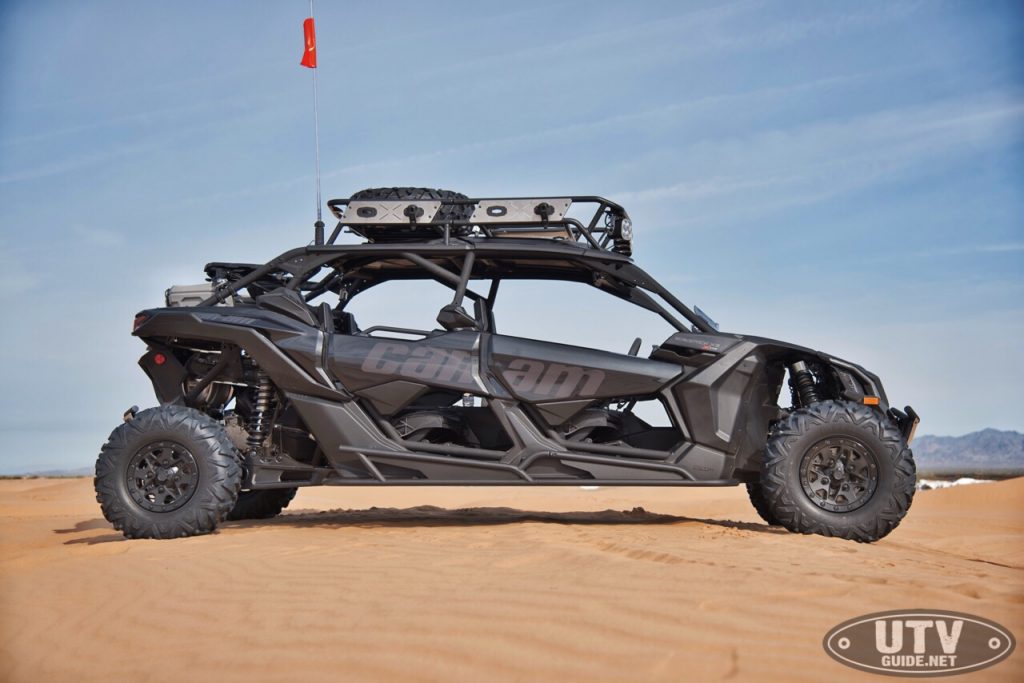
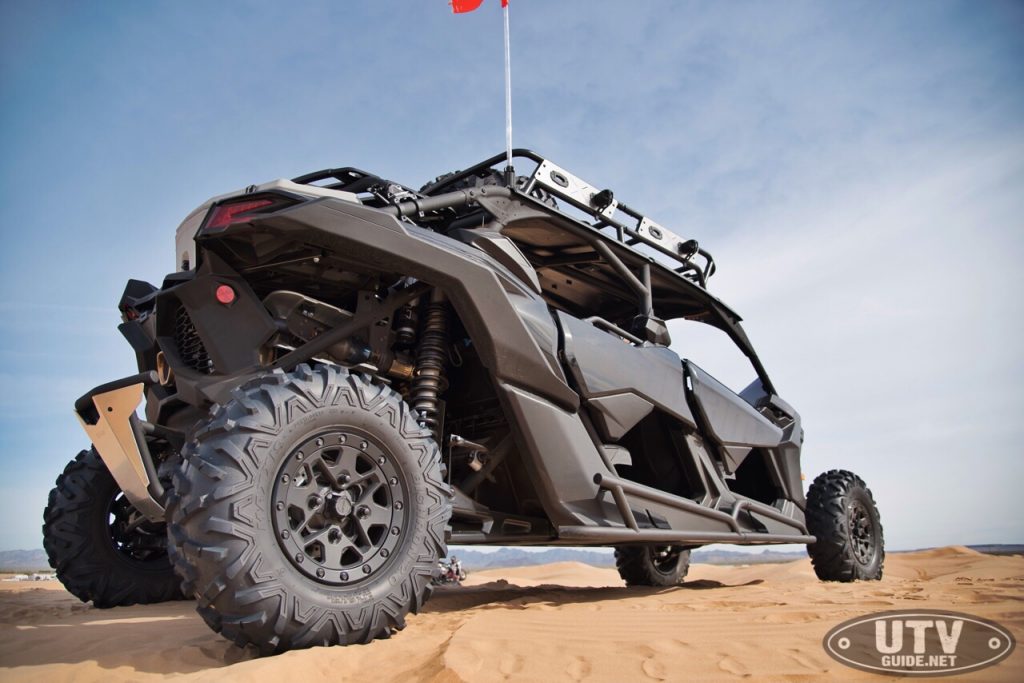
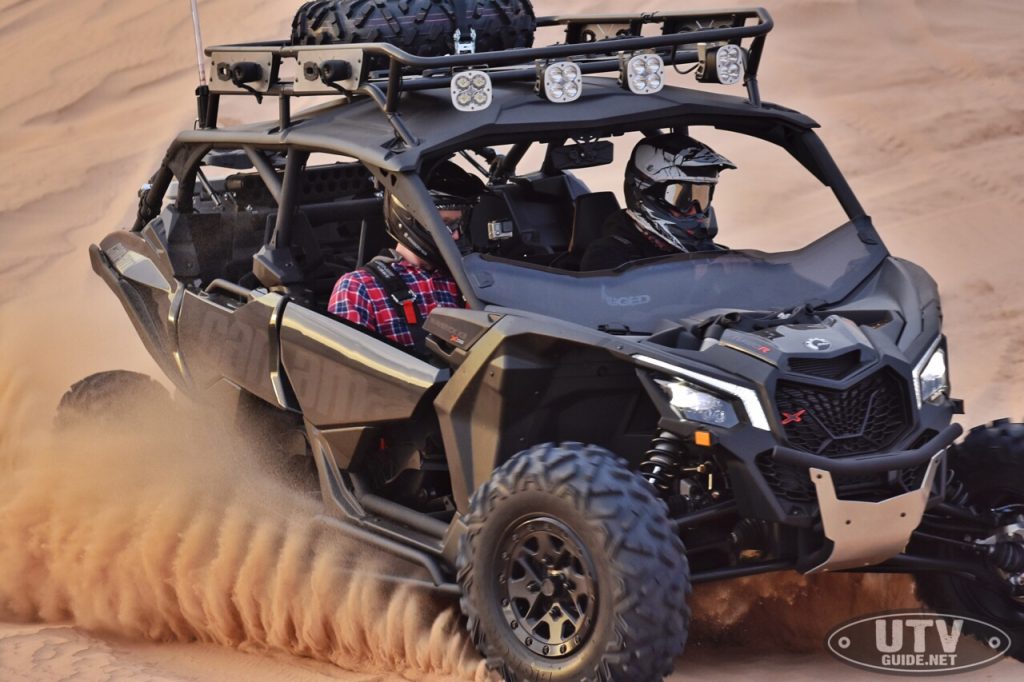
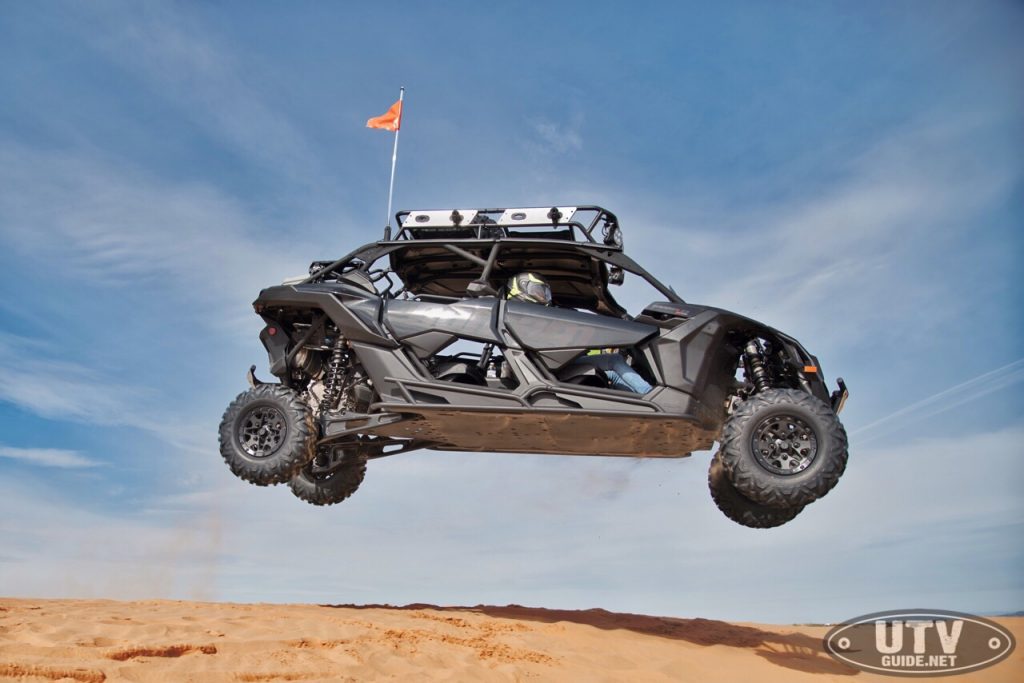
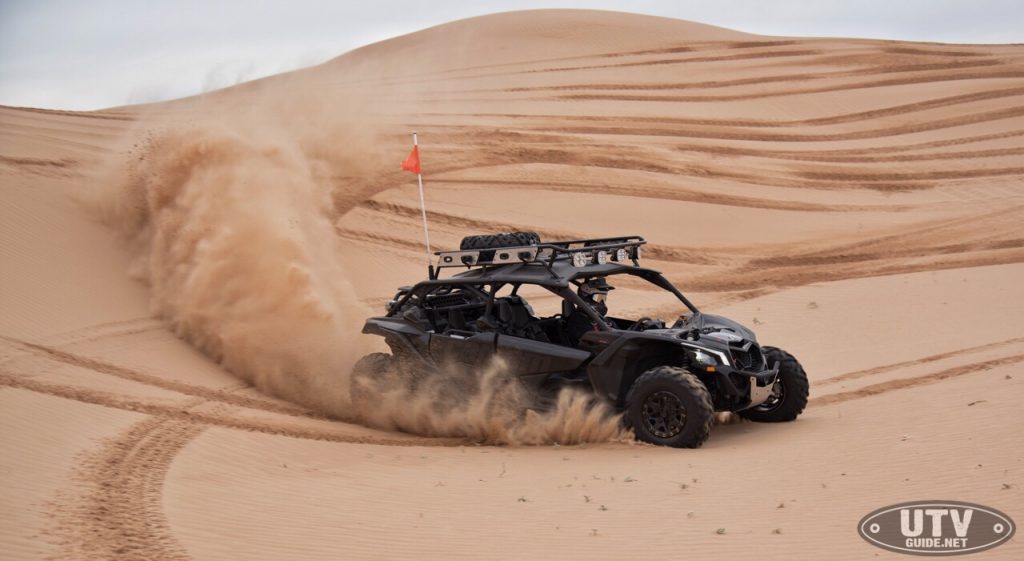
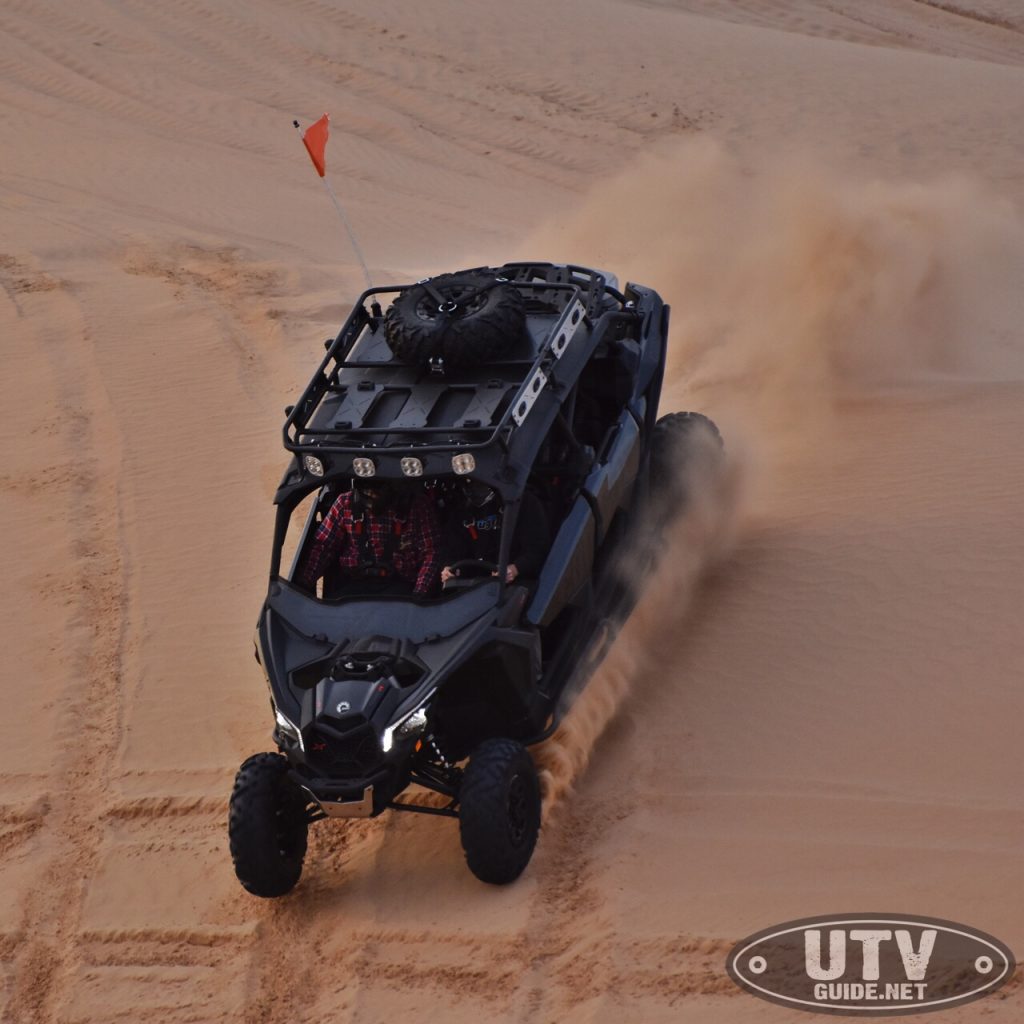
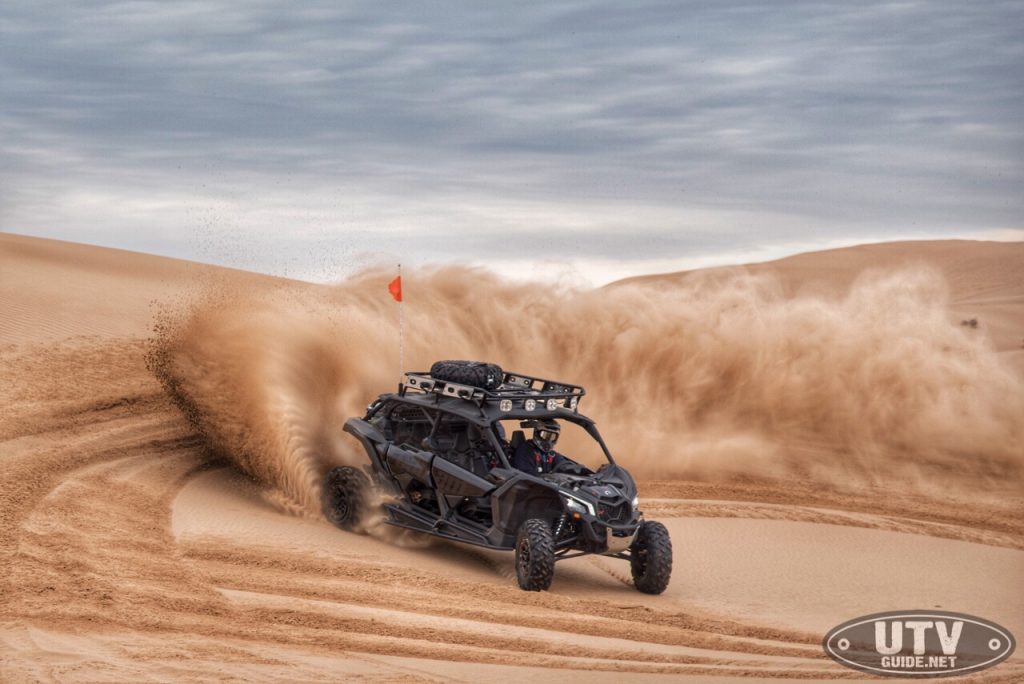
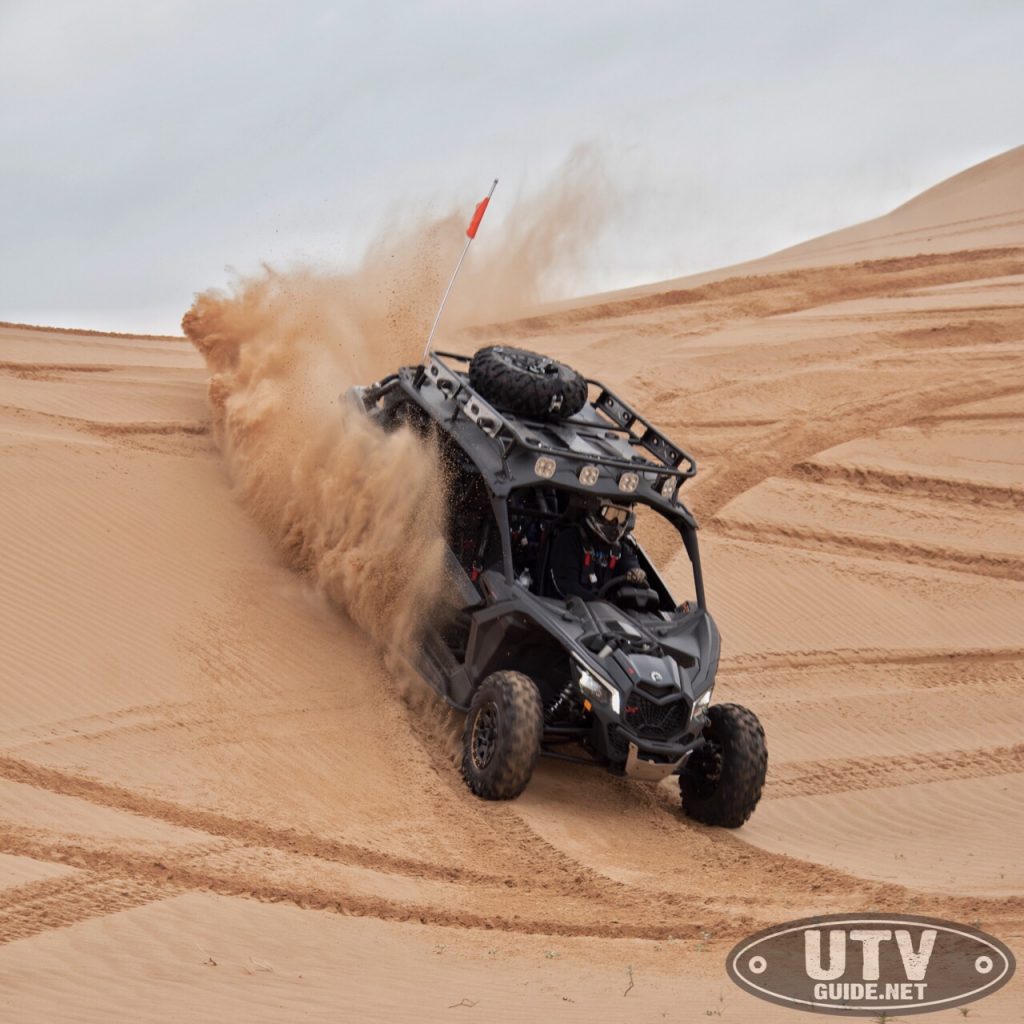
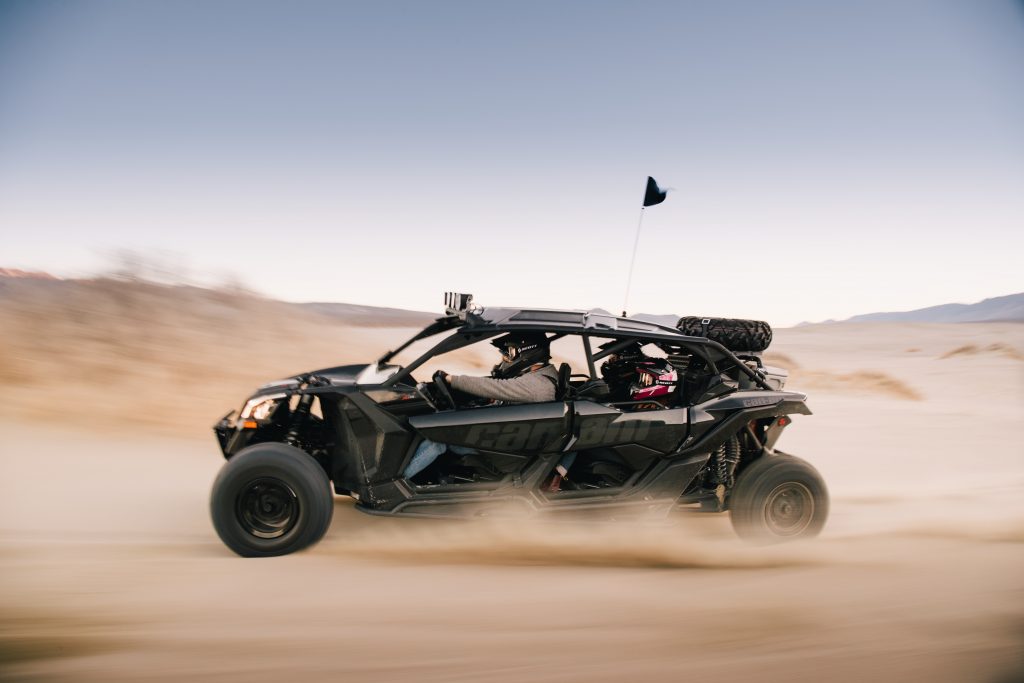
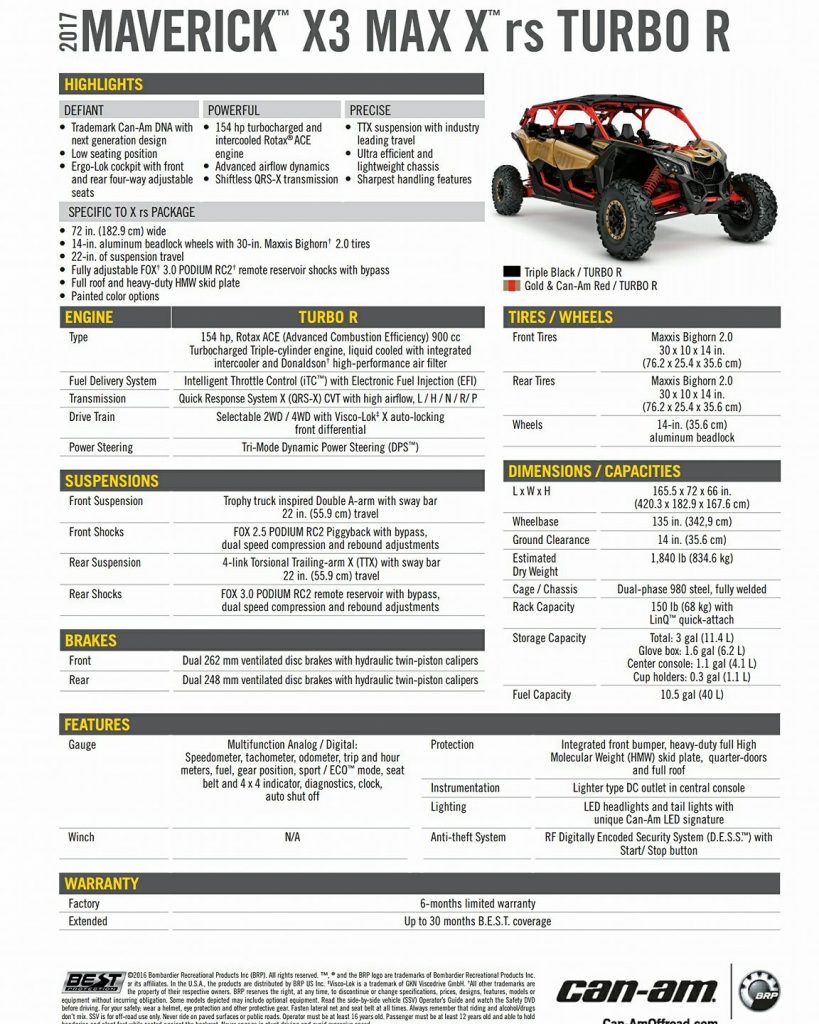
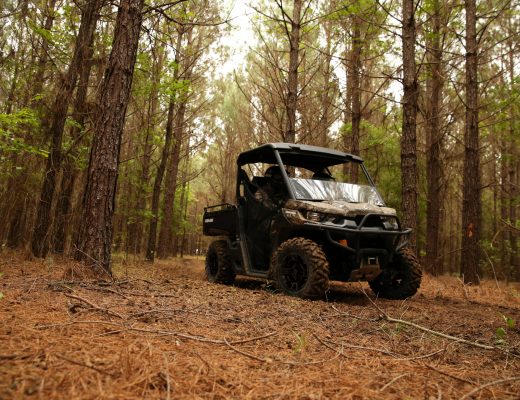
Four Seat Can-Am Maverick X3 MAX Unveiled - UTV Guide
March 8, 2017 at 12:44 pm[…] Can-Am Maverick X3 Max Dune Review […]
CAN-AM X3 REVlEW BY UTV GUlDE
March 8, 2017 at 1:28 pm[…] { googletag.display('MaverickForums_net_300x250_Postbit_PS_Forum'); }); 2017 CAN-AM MAVERICK X3 MAX X DS DUNE REVIEW – UTV Guide TENNESSEE 131 ON FACEBOOK Reply With […]
Canam x3 max - Page 3
March 8, 2017 at 11:09 pm[…] guide seem to like it2017 CAN-AM MAVERICK X3 MAX X DS DUNE REVIEW – UTV Guide Reply With […]
What’s the best out of the box UTV for Dune Duty? - UTV Guide
March 24, 2017 at 11:36 am[…] significantly longer than any other car in the comparison here, limiting its maneuverability (see Maverick X3 Max Dune Review for more details). The 102 inch Maverick X3 smooths out whoop sections better than the RZR XP 2 […]
UTV Product Reviews SxS Model Reviews - UTV Guide
April 1, 2017 at 3:28 pm[…] 2017 CAN-AM MAVERICK X3 MAX X DS DUNE REVIEW […]